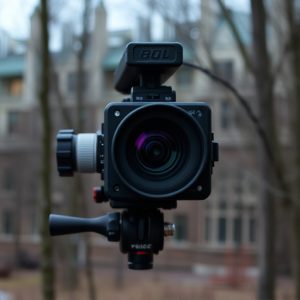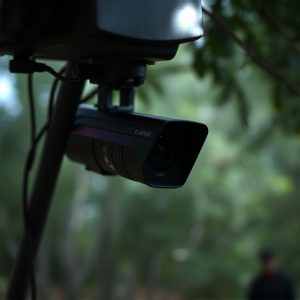Optimizing Home Security: Best Practices for Covert Camera Networks
When considering hidden cameras for home monitoring, it's crucial to balance security with priv…….
When considering hidden cameras for home monitoring, it's crucial to balance security with privacy. Each region has strict laws regarding surveillance technology, and ethical considerations include respecting personal freedoms. Before deploying hidden cameras, explore alternative solutions like improved lighting or robust locks. Select a system with wide-angle coverage, high-resolution footage, IR lighting, cloud storage, and motion-activated triggers for comprehensive monitoring. Strategically place wireless cameras in key areas, use network management for secure data transmission, and integrate with smart home platforms for remote access via smartphone or computer.
“Uncover the power of hidden cameras for home monitoring while navigating the intricate balance between security and privacy. This comprehensive guide explores the best practices for installing a covert camera network, delving into legal considerations, ethical implications, and choosing the ideal system for your needs. From strategic placement to effective network management, discover strategies to maximize surveillance efficiency without infringing on personal freedoms. Enhance your home security with these expert tips.”
- Understanding Legal Considerations and Ethical Implications
- Choosing the Right Camera System for Your Needs
- Effective Placement and Network Management Strategies
Understanding Legal Considerations and Ethical Implications
When considering hidden cameras for home monitoring, understanding legal considerations and ethical implications is paramount. Each jurisdiction has strict regulations governing surveillance technology, including requirements for consent, privacy rights, and data protection. Ignoring these rules can lead to severe legal consequences, including fines and imprisonment. For instance, many regions mandate that homeowners obtain explicit permission from all residents before installing hidden cameras within their shared spaces.
Moreover, ethical implications extend beyond the legal realm. Homeowners must weigh the potential benefits of enhanced security against the right to privacy of those captured on camera. Installing hidden cameras in common areas without informed consent can foster an atmosphere of distrust and infringe upon personal freedoms. It’s crucial to consider alternative security measures that respect both privacy and safety, such as improving lighting or investing in robust locks, before resorting to hidden cameras for home monitoring.
Choosing the Right Camera System for Your Needs
When considering a covert camera network installation, selecting the right system is paramount to achieving effective home monitoring. The first step involves assessing your specific requirements. Are you prioritizing wide-angle coverage for a larger property, or do you need high-resolution footage for detailed observation? Hidden cameras designed for home monitoring come in various forms, from compact and discrete models ideal for narrow spaces to robust systems with advanced features like motion detection and night vision.
Matching your camera system to your needs ensures optimal performance. For instance, if privacy is a concern, opt for cameras with IR lighting for nighttime surveillance without disturbing the environment. Additionally, cloud storage integration allows for remote access and real-time alerts, making it easier to monitor your home from anywhere at any time—a significant advantage in enhancing security through hidden cameras.
Effective Placement and Network Management Strategies
Effective placement is key to harnessing the power of hidden cameras for home monitoring. Strategically positioning surveillance devices in areas of interest, such as entryways, living rooms, and bedrooms, ensures comprehensive coverage without infringing on privacy. Wireless technology enables flexible installation, allowing you to conceal cameras within everyday objects or furniture. Additionally, using motion-activated triggers enhances efficiency by capturing only relevant footage, preserving storage space and battery life.
Network management plays a crucial role in maintaining a covert camera network. A dedicated local area network (LAN) ensures secure data transmission, preventing unauthorized access. Regularly updating firmware keeps cameras optimized for performance and security. Moreover, integrating the system with smart home platforms enables remote monitoring and control via smartphone or computer. This allows homeowners to stay vigilant, even when away from home, enhancing overall security measures.
Installing a covert camera network for home monitoring requires a balance between security needs and respecting privacy. By understanding legal boundaries, selecting suitable hardware, and employing strategic placement and management techniques, you can create an effective surveillance system while mitigating ethical concerns. Remember, responsible use of hidden cameras is key to ensuring peace of mind without infringing on personal privacy.


